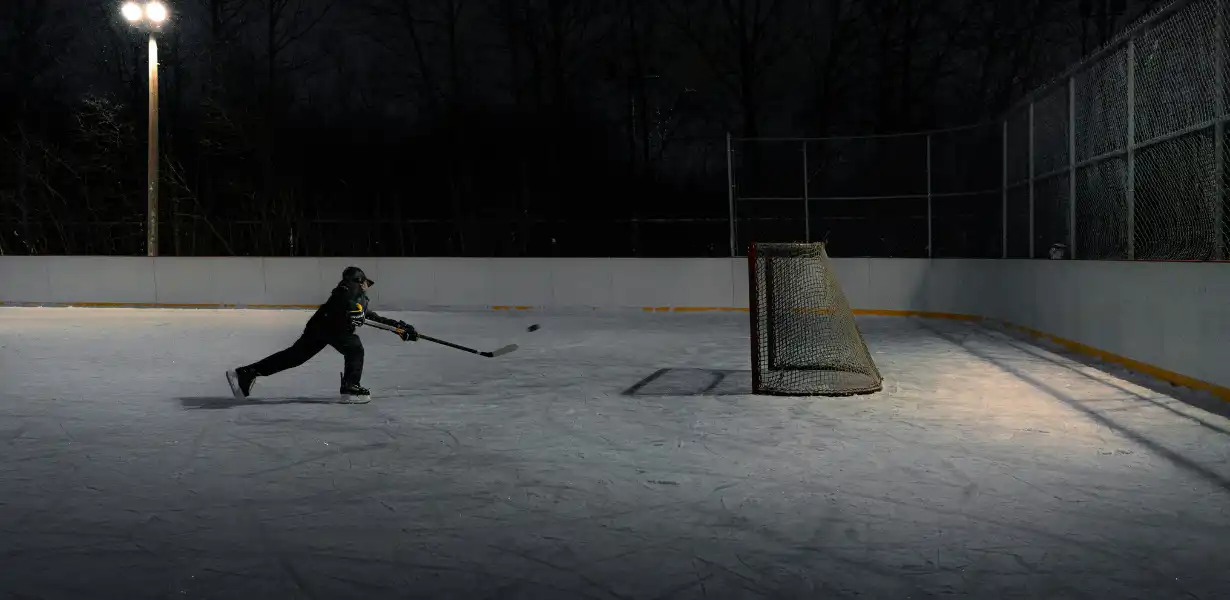In hockey, finding the back of the net is an art that combines skill, timing, and hockey sense. While raw shooting power can make an impact, the true difference-makers on the ice are the players who consistently target high-percentage scoring areas. These are the sweet spots where goaltenders are most vulnerable, and precision often matters more than speed. Understanding these areas and training to hit them with consistency can dramatically increase your scoring success.
The Goaltender’s Weak Spots
Every goalie has the same objective: take away as much net as possible. But even the most technically sound goalies leave openings that shooters can exploit. The key scoring areas are often referred to as “high-percentage zones,” and players who master these can quickly become offensive threats.
1. The Five Hole
The five hole is the space between the goaltender’s pads. It’s especially vulnerable during quick transitions, dekes, or breakaways when the goalie is forced to move laterally. A well-timed release low and between the pads can beat even the sharpest netminders.
2. The Glove Side High
Goaltenders pride themselves on their glove saves, but the upper glove side remains one of the hardest spots to defend consistently. Shooting here requires precision, as missing the net is easy. Still, when executed properly, it leaves little chance for recovery.
3. The Blocker Side High
The blocker side, particularly high above the pad and below the crossbar, is another classic scoring area. Goalies tend to have slightly less control with the blocker compared to the glove, which gives skilled shooters an opportunity to exploit.
4. Top Shelf
“Roofing it” is every sniper’s dream. Going bar-down or top shelf is not only effective but also demoralizing for the goalie. This shot is best used when close to the net, catching the goalie down in the butterfly position.
5. Rebound Hot Zones
Not every goal comes from a clean shot. Rebounds off pads often leave pucks sitting dangerously in front of the crease. Consistently crashing the net and being ready to capitalize on these second chances is as important as hitting a corner shot.
How to Consistently Hit Scoring Areas
Hitting these prime scoring zones takes more than luck. It requires repetition, proper technique, and situational awareness. Below are proven strategies to sharpen your accuracy.
1. Focus on Quick Release
A fast, deceptive release is more valuable than a heavy shot. Goaltenders rely on reading body language, so minimizing your wind-up gives you the edge. Practice wrist shots and snapshots that get off your stick quickly, aiming for corners or low pads to create rebound chances.
2. Master Shot Placement Drills
Repetition builds muscle memory. Use targets in practice—pucks, water bottles, or commercial shooting aids—to hone your ability to pick corners. Start slow to ensure accuracy, then add speed and pressure to replicate game conditions.
3. Change Shooting Angles
A stationary shot is easy to read. By moving laterally before releasing, you force the goalie to adjust, which often opens gaps in coverage. Practice shooting while skating, cutting across the slot, or releasing in stride to increase unpredictability.
4. Learn to Read the Goalie
Elite scorers don’t just fire blindly; they scan the goalie’s stance and react. If the goalie drops early, aim high. If they hug the post tightly, target the far side. Developing this awareness comes with experience and constant observation.
5. Strengthen Your Core and Balance
Shooting mechanics rely heavily on stability. A strong core ensures consistent follow-through, which improves accuracy. Off-ice training that focuses on balance and core strength can give you the edge when shooting under pressure.
6. Rebound Awareness
Never assume the first shot will score. Train yourself to follow the puck after every release, staying ready for rebounds. This habit often leads to easy goals in high-traffic areas.
Game Situations and Shot Selection
Different situations call for different approaches. Understanding when and how to target scoring areas is just as crucial as technical skill.
• Breakaways: On one-on-one chances, deception is your weapon. Use quick dekes or release a shot through the five hole before the goalie sets.
• Power Plays: With extra space, focus on cross-ice passes and one-timers that force the goalie to move. Target glove-side high or blocker-side corners.
• Screens and Traffic: When vision is blocked, low shots to the pads are ideal, creating rebounds for teammates.
• Close Range: Top-shelf opportunities are most effective when the goalie has committed to a butterfly stance.
Training Tips for Consistency
Consistency comes from disciplined practice and developing instincts that translate seamlessly into real games.
1. Daily Shooting Routines: Set a goal for a number of shots per day, focusing on different scoring zones.
2. Video Review: Analyze your shot placement in practice and games to identify trends and weaknesses.
3. Variety in Practice: Incorporate snapshots, wrist shots, slap shots, and backhands into your training. Versatility keeps goalies guessing.
4. Mental Training: Visualize successful shots hitting top corners or sliding through the five hole. Confidence plays a massive role in execution.
Closing Shift
Scoring in hockey is about more than raw power—it’s about accuracy, awareness, and execution under pressure. By focusing on the key scoring areas—five hole, glove side, blocker side, top shelf, and rebounds—you can increase your chances of lighting the lamp consistently. Pair that knowledge with quick releases, smart reads, and structured practice, and you’ll transform your scoring ability.

